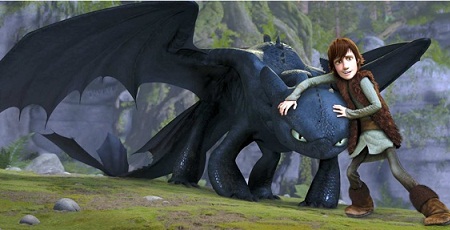The other day I wrote about the inevitability of movie production going entirely virtual. Some of those ideas were touched upon during a panel discussion we had last week at the FMX conference. I also said something else during that panel discussion, perhaps a bit more radical than the mere fact of film production going completely digital. The general drift was as follows.
The salient feature of live action film-making, as opposed to animation, is that you are looking at real people — a literal (albeit stylized) representation of reality. George Clooney looks precisely like a human being, although probably not any human being you are likely to encounter every day. He exists in a literal reality — his movements are subject to the laws of physics, his clothes wrinkle up exactly like real clothes, his hair is exactly like real hair, and the light reflects off his face precisely the way real light reflects off a real face.
There are thousands upon thousands of details to continually inform you that you are watching a literal representation of reality. Those details are not present when you watch the Navi in Avatar, or Gollum in The Lord of the Rings, as detailed as those depictions may be. At every moment, your mind tells you, rather firmly, that Mr. Clooney’s image is the result of a camera literally pointing at a physically present actor.
Why do movies work this way? Because, I assert, it’s convenient. For most of the history of film, a physically present actor on set was the only game in town, unless you were going for extreme stylization. You get a more realistic performance out of a physical actor than you can out of a cartoon character. And it’s a lot simpler just to point a camera at someone than to animate them frame-by-frame. You are guaranteed twenty four frames per second, captured in real time — which is far more efficient than spending an hour or more drawing each of those frames.
So I would argue that film has been a kind of found-art medium not by artistic choice, but by technological convenience. It’s not that filmmakers are in love with literal reality, but rather that literal reality has been the most accessible source material for the stories they’ve wanted to tell.
Support for this assertion comes from looking at films themselves. You very rarely see a film in which things look the way they do in real life. Sets, lighting, make-up, hair, clothing, the sound objects make when they fall, the very way people act, none of these things are realistic in movies. Rather, experts spend hours creating an artfully stylized and heightened version of reality up there on screen. Were George Clooney’s character to encounter someone whose clothes, lighting, make-up, and general demeanor were exactly the same as what we see in everyday life, the shock of that incongruity would yank you right out of your cozy suspension of disbelief.
Which means that when filmmaking goes entirely digital — when the George you see up on that screen becomes merely a digital recreation of himself, a set of pixels created by lighting, texturing and moving a digital model of the real George — this stylization will gradually become more extreme.
It won’t happen right away. The early purely digital films will look very much like the highly stylized but physically plausible movies we are used to today. But then things will start to change. New generations of filmmakers will begin to make choices that veer away from anything you could get by pointing a camera at a physical actor. Nobody will notice, because it will just be a continuation of the stylized sets, lighting, make-up and camera work we associate with Hollywood films.
But because that stylization won’t be bound by the physically attainable, it’s going to start to drift. In another twenty years, the images we will see in movies will be markedly different from anything in this world that one could ever capture with a camera. People in movies will look different, and will move differently, and what will pass for “physical reality” on screen might very well bear little resemblance to what is expected by an audience of today.
To those future audiences, movies from our current era will appear dated, the way a movie from fifty years ago — limited by an earlier technological era of lights and film stock — seems dated to our own eyes.
I can’t predict the direction this drift from literal reality will take. Only the ecosystem of future filmmakers and future audiences can determine that vector. But I am fairly certain that film is gradually going to merge with what we would currently think of as a kind of animation, and that the next few years mark the end of pure literalism in cinema. To future generations of audiences, the movies from our own time will seem oddly quaint, like a black and white film or a silent picture.


